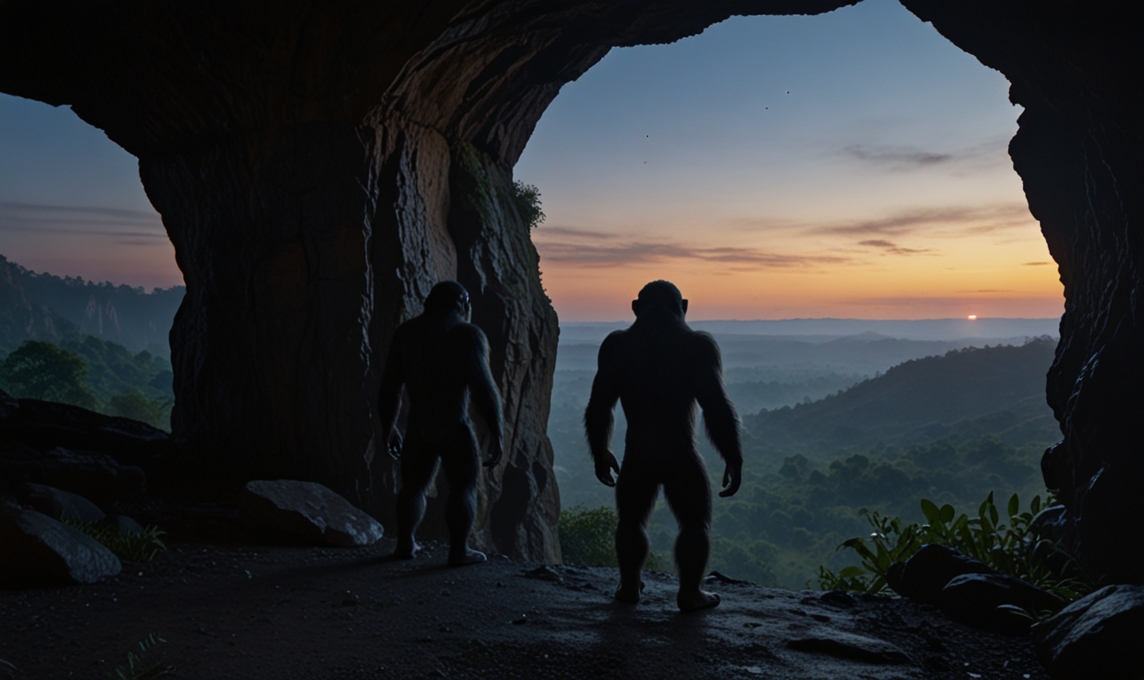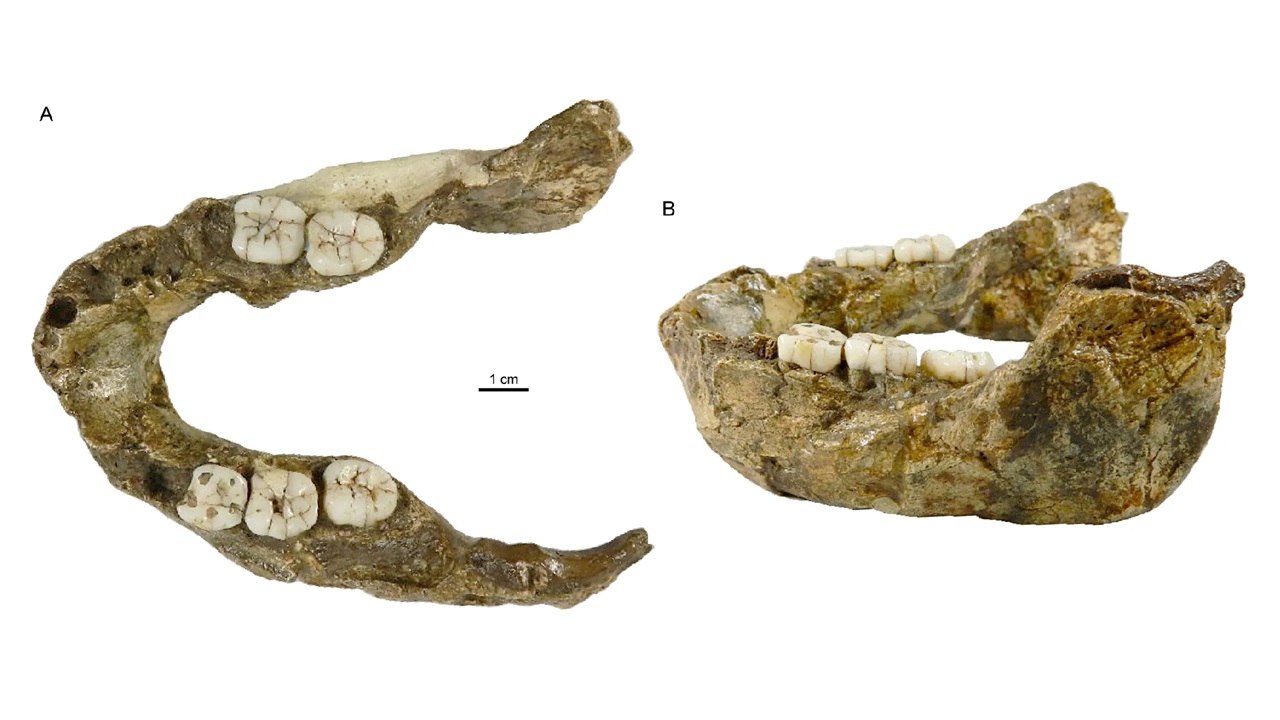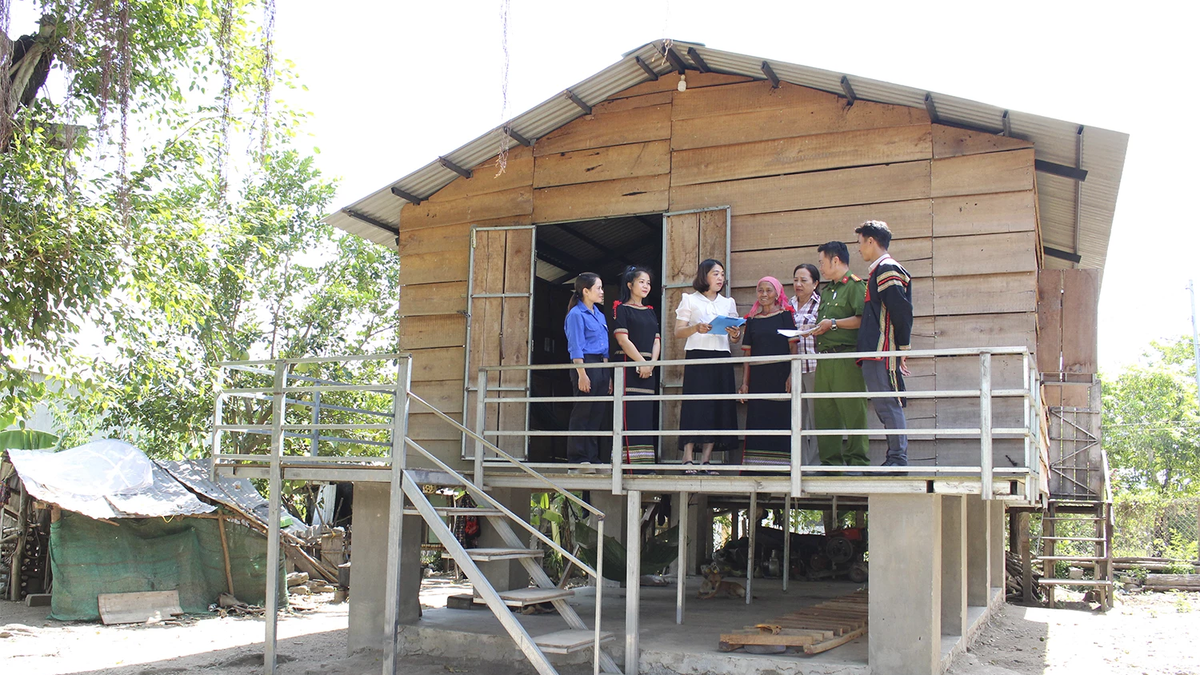(NLDO) - A strange set of teeth dating back up to 1.4 million years has helped identify a new species "close to humans".
A research team led by paleoanthropologist Clément Zanolli from the University of Bordeaux (France) used modern means to reanalyze SK 15, a set of teeth quite similar to modern human teeth, excavated at the Swartkrans site in South Africa since 1949.
The result was unexpected: It was the remains of a species never before recorded in the world , belonging to the Paranthropus genus of the hominin tribe and living about 1.4 million years ago.

New species Paranthropus capensis is a "close-to-human" hominid - Illustration AI: Thu Anh
Paranthropus means "close to man" in Latin. Members of this genus are also nicknamed "nutcrackers" because of their large jaws and large, coarse teeth compared to other human species.
They move on two legs but their appearance still has strong hominid features, not really like humans.
According to Science Alert, at the time Paranthropus lived, the world also had a number of other hominin species, including our own genus Homo, which appeared at least 2.8 million years ago.
We Homo sapiens only appeared a little over 300,000 years ago, but our ancestors are thought to have had overlapping relationships with three Paranthropus species, which lived 1-2.7 million years ago.
It is likely that the newly discovered species was the same, because the Swartkrans site - where the ancient remains were found - also contained tools typical of species of the genus Homo.
Specimen SK 15 has an interesting history. For decades, it was mistaken for the teeth of an ancient human species, Homo ergaster.

Specimen SK 15 - Photo: Lazarus Kgasi
This time, however, scientists discovered that the dentin beneath the enamel did not match any known Homo specimens.
Instead, based on the shape of the jaw and the size and shape of the tooth bodies and roots, SK 15 is likely to belong to Paranthropus. However, it also looks different from any known Paranthropus specimen.
They named the species Paranthropus capensis. These ancient humans - or human-like apes - coexisted with another species of the genus Paranthropus robustus in southern Africa.
They may have occupied different ecological niches, which is suggested by their distinct teeth, which indicate different types of food each species preferred.
Scientists are continuing to investigate and hope to find more specimens of the new species Paranthropus capensis, to see if they have reached an evolutionary dead end or become ancestors of any species on the complex evolutionary tree of humanity.
Source: https://nld.com.vn/lo-dien-loai-ho-hang-chua-tung-biet-cua-con-nguoi-196250207112148476.htm







































































































Comment (0)